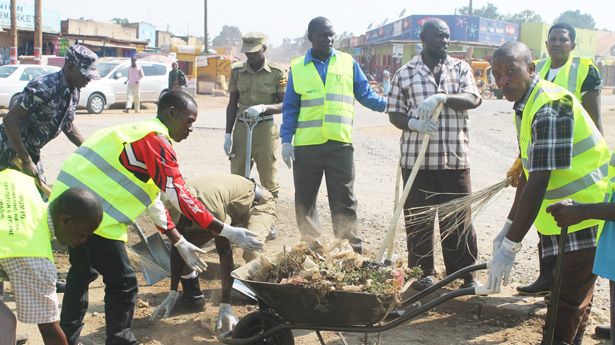Urban Domestic Waste Management is drawing increasing attention, as citizens observe that too much garbage is lying uncollected in the streets, dustbins, causing inconvenience and environmental pollution, and being a risk to public health. Although government authorities apply all the means at their disposal, the piles of wastes only seem to grow.
SOLID WASTE MANAGEMENT AND DISPOSAL
OVERVIEW
DOMESTIC WASTE MANAGEMENT
In Kampala city alone domestic waste generation rates range between 0.5kg and 1.1kg per capita per day. The population of Kampala City and its suburbs is estimated at 1.5 million. The estimate of waste per capita generation per day is 0.5kg. This makes the total collection to be 1.5 million x 0.5kg = 750,000kg per day or 750 tonnes generated per day. Domestic waste generation is higher among high income earners. On average the collection is 45-50% of the total waste and so on a daily basis collection amounts to 375 tonnes or 37,500kg of waste collected a day from Kampala.

In composition, plastics under which polythene falls account for 1.6% with the highest being 73.8% for vegetable matter with the rest being tree cuttings, glass, metals, and paper.etc. Kampala city generates 800tons of domestic waste per day.
Increasingly, the private formal sector is seen as a key participant in the full range of urban waste management activities, including collection, transportation, treatment, processing, separate collection, recycling, composting, and disposal of waste. Neighborhood associations, communities, and small, informal enterprises are increasingly involving themselves in the management of household and business wastes; with the explicit aim of creating livelihoods and maintaining a clean and healthy living environment.
SEWERAGE DISPOSAL
Currently Kampala has only one sewage treatment plant in Bugolobi, an area of Kampala. This has a limited sewer network, but is operating below capacity.
Each day 300 out of the 1000 tones of sewage generated in Kampala, is deposed off directly into the environment. According to the National Water and Sewerage Cooperation, only 600 tones of the sewage goes through proper sewer lines and is treated, while the remaining 100 is retained in latrines and septic tanks.
National Water is planning to expand its sewerage network with two more treatment plants at Kinawataka in Mbuya and Lubigi in Nabweru. Presently, only 8 percent of Kampala’s residents are connected to proper sewer lines.
